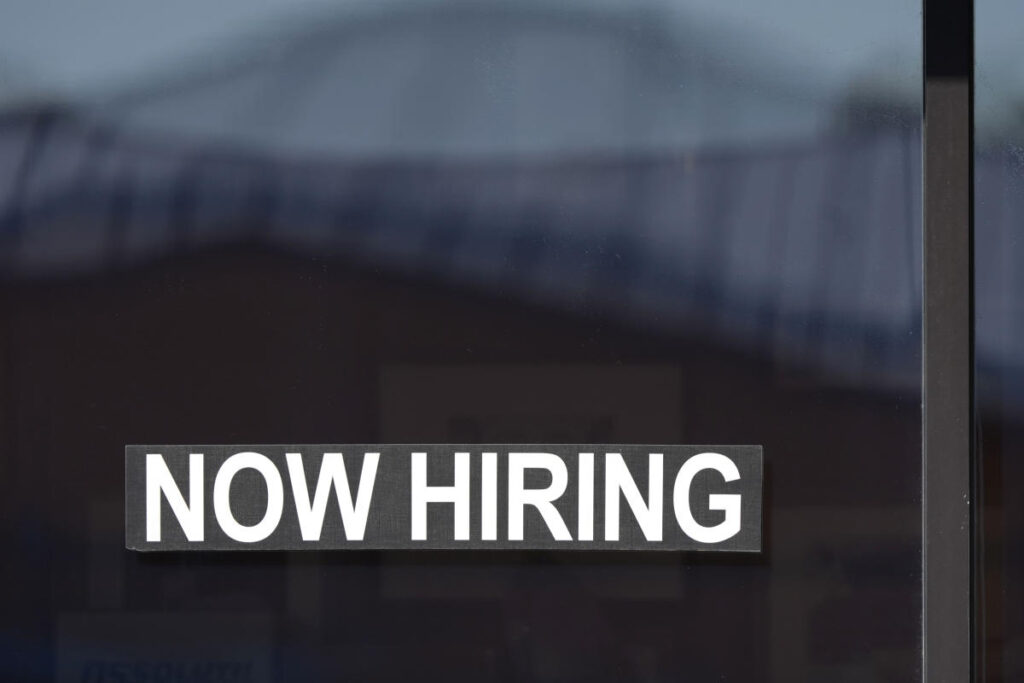The labor market in the United States is experiencing a notable shift, with job switchers no longer receiving substantial pay increases when moving to new positions. Data released by ADP reveals that the median year-over-year pay increase for individuals changing jobs dropped to 6.2% in October, a significant decline from the peak of 16.4% observed during the pandemic recovery. Furthermore, the disparity between the wage growth of job changers and those who remain in their positions is narrowing. While job changers previously enjoyed a pay bump that was 9 percentage points higher than that of job stayers during the labor market’s rebound in 2022, it has since decreased to just 1.5%. ADP chief economist Nela Richardson emphasizes that this trend suggests it is becoming less economically advantageous for workers to switch jobs, which may explain the declining turnover rates within the labor market.
This reduction in incentive for job switching corresponds with broader economic indicators showing a cooling labor market. The Bureau of Labor Statistics reported that job openings fell to their lowest level since January 2021, while the quits rate—a metric indicating worker confidence—declined to 1.9% in September, marking the lowest rate since June 2020. The decline in both job openings and quits suggests that workers are becoming more cautious about leaving their current positions. Notably, the Federal Reserve’s October Beige Book provided anecdotal support for this trend, reporting minimal layoffs and low turnover rates across various districts, along with a hiring focus that appears primarily geared towards replacement rather than expansion.
Despite these signs of decreased worker mobility, economists indicate that lower turnover may not be a negative development for the labor market, provided that layoffs remain limited. Observations indicate a steadying labor market rather than a substantial slowdown. The ADP’s recent data reported the addition of 233,000 jobs in October, far exceeding economists’ expectations of 111,000, and significantly surpassing the revised figure of 159,000 jobs added in September. This positive job growth in the private sector hints that while workers may be sticking with their jobs, the overall labor market continues to demonstrate resilience.
As the labor market braces for new challenges, the upcoming October jobs report will serve as an important indicator of economic health. Economists predict the addition of approximately 110,000 jobs, reflecting a decline from the 254,000 jobs added in September. The anticipated slowdown in job growth may result from the impacts of recent hurricanes and ongoing worker strikes. The performance of the labor market in this upcoming report will be critical, especially in understanding how external factors are influencing employment trends amid evolving worker sentiments regarding job changes.
The sentiment around job flexibility appears to have shifted as employees reassess their career trajectories. With pay incentives diminishing for those seeking new opportunities, workers may prioritize job stability over the hunt for higher salaries. This shift could be a reflection of broader economic uncertainties, where the prospect of reliable employment becomes more attractive than the risks associated with navigating a volatile job market. As indicated in several reports, this may also result in more cautious decision-making among workers who previously sought out better-paying opportunities by job switching.
In conclusion, the current landscape of the American labor market, characterized by reduced pay increases for job changers and lower turnover rates, reflects a complex interplay of economic conditions. While some indicators remain strong—such as job creation in the private sector—other metrics suggest a cooling trend in worker mobility and a more cautious workforce. As the labor market navigates these changes, the focus will likely shift towards maintaining stability and ensuring that both employers and employees can adapt to the evolving economic environment.

